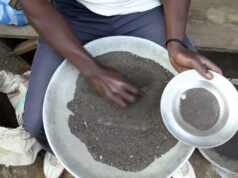
(3 Minutes Read)
According to a new ranking by the financial analysis site “Insider Monkey”, Morocco is 17th globally among countries with the most debt to the International Monetary Fund (IMF)
According to a new ranking by financial analysis site “Insider Monkey”, Morocco is 17th globally among countries with the most debt to the International Monetary Fund (IMF). The Northern African country seeks continued cooperation to bolster its economic stability. The ranking, which draws on IMF data up to March 24, highlights the substantial financial obligations of the Kingdom, with its debts to the international institution reaching USD 1.34 billion.
Morocco is in the spotlight alongside other nations grappling with substantial IMF debts. Its neighbor Tunisia ranks 20th globally with a debt of USD 1.14 billion to the IMF, while Jordan occupies the 14th position with a debt surpassing USD 1.5 billion.
However, it is Egypt that stands out prominently, ranking second globally, with a staggering debt exceeding USD 11 billion to the IMF, juxtaposed against its GDP surpassing USD 476 billion in 2022. The ranking by “Insider Monkey” delves deeper into the African continent, revealing South Africa’s placement as the ninth most indebted nation globally, owing USD 2.29 billion to the IMF.
Argentinaoccupiestop position with a cumulative debt surpassing USD 32 billion, against a formidable GDP exceeding US$631 billion. The debt profiles of Senegal and the Democratic Republic of Congo, further solidifying the narrative of the heightened debt across Africa.
Read Also:
Despite these challenges, some African countries, including the Democratic Republic of Congo, Mauritius, Rwanda, Côte d’Ivoire, and Ethiopia, have demonstrated resilience with economic expansions exceeding 5%.





